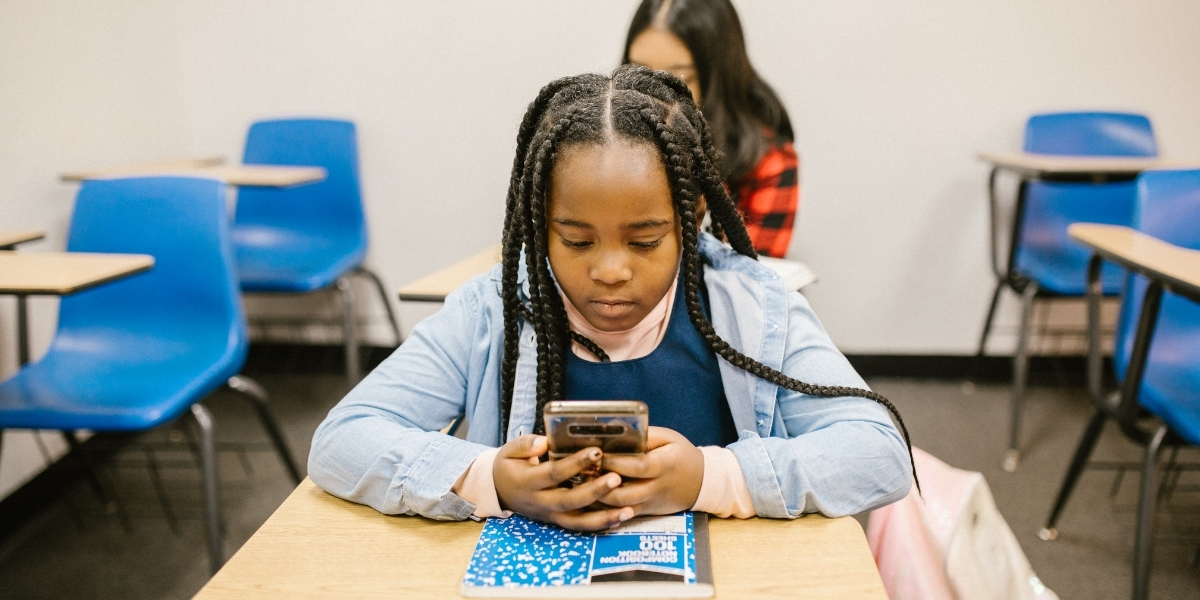In today’s digital age, cyberbullying in schools has emerged as a serious threat—not just to a student’s mental well‐being, but also to the fabric of a healthy, safe, inclusive educational environment. Where once bullying was confined to schoolyards and hallways, it now follows students home through smartphones, social media, messaging apps, online games, and other digital platforms. A rude comment, a harmful image, exclusion in a group chat—these can leave scars that last well beyond the moment.
For Black students, students of color, LGBTQ+ youth, and other marginalized students, cyberbullying often carries additional layers of risk: identity‐based harassment, stereotyping, racist or homophobic slurs, or targeted exclusion. The psychological toll can be heavier when the bullying compounds other experiences of marginalization.
As The Black Student Advocate Network, our mission is to help schools, educators, parents, and students build more just, safe, and supportive school communities. Preventing cyberbullying in schools isn’t just about rules—it’s about culture, awareness, support, and empowerment. Below are 10 practical ways schools can work proactively to prevent cyberbullying and protect every student. These are grouped in six main themes or outlines, each with concrete actions, examples, and considerations.
1. Establish Clear Policies and School Culture
a) Develop and enforce comprehensive anti-cyberbullying policies
- Schools should have written policies that explicitly define cyberbullying in schools, including what constitutes unacceptable behavior (harassing messages, non-consensual image sharing, hateful or discriminatory comments, etc.).
- The policy should address what happens when incidents occur on school grounds, on school-owned devices, off campus, during after-school hours, or through external platforms.
- Clear consequences should be established and communicated: disciplinary procedures, restorative practices, or mediation, depending on severity.
- Review and update these policies regularly to keep up with new technologies or social media platforms.
- For Black students and other marginalized groups, include anti-discrimination provisions, ensuring identity-based harassment (race, gender, sexuality) is specifically addressed.
b) Establish a positive, inclusive school culture
- Promote a culture of respect, empathy, kindness, and responsibility. It must go beyond policy: values should be visible in daily school life (posters, assemblies, classroom norms).
- Incorporate statements of inclusion in the school mission, vision, or code of conduct. Ensure students see themselves represented (in staff, curriculum, images, etc.).
- Celebrate diversity, teach about cultural competency, and make clear that bias, microaggressions, and hate speech are not tolerated.
2. Educate Students, Staff, and Families
c) Digital citizenship & online safety curriculum
- Teach students what it means to be responsible digital citizens: privacy, consent, respectful communication, recognizing disinformation, thinking before posting, understanding digital footprints.
- Include lessons/training around how online behavior affects others, especially when messages are ambiguous. Emphasize that “just joking” can be harmful.
- Use interactive methods: role-plays, real-world scenarios, peer discussions.
d) Training for staff and professional development
- All staff (teachers, aides, counselors, administration) need to recognize signs of cyberbullying, respond effectively, and support students.
- Include training on cultural bias and implicit bias so staff can understand how harassment tied to race, gender identity, sexuality, or other identities can escalate or be dismissed.
- Provide tools for staff to intervene, mediate, or escalate issues.
e) Family and caregiver workshops
- Many parents/caregivers may not be fully aware of new platforms, apps, or the nuances of digital communication among youth. Workshops or information sessions can help them stay informed.
- Share resources (online safety guides, warning signs, how to talk to children about respectful online behavior).
- Encourage consistent expectations at home about screen time, respectful communication, and reporting harmful behavior.
3. Foster Social-Emotional Skills and Inclusive Environments
f) Build students’ empathy, emotional regulation, and resilience
- Integrate social-emotional learning (SEL) into the curriculum: helping students manage emotions, understanding others’ perspectives, conflict resolution, communication skills. Evidence suggests SEL contributes significantly to reducing bullying and cyberbullying. (SchoolSafety.gov)
- Offer regular classroom or school assemblies/workshops to practice empathy, anti-bias awareness, inclusive behavior.
g) Empower student voice, peer support, and bystander intervention
- Educate students not just about being victims or bystanders, but about being upstanders: students who safely intervene, report, or support peers.
- Establish peer support groups, mentoring programs, student councils that promote positive online behavior.
- Safe spaces or affinity groups where marginalized students (e.g. Black students, LGBTQ+ youth) can share experiences and strategies.
4. Implement Reporting, Monitoring, and Safe Technology Use
h) Safe, accessible reporting systems and consistent monitoring
- Provide multiple channels for students to report cyberbullying: anonymous online forms, trusted staff persons, counselors. Many may fear retaliation. (Webwise.ie)
- Ensure reports are taken seriously, investigated in a fair manner, and that there are documented follow-ups. Transparency in how the process works can increase trust.
- Monitor high-risk times/places: before/after school, during coordination of online platforms used for schoolwork, group chats, etc.
i) Responsible use of devices and privacy safeguards
- Define acceptable use policies (AUP/RUA) for school devices and networks. Clarify expectations even outside school hours when school devices are used. (Nearpod)
- Equip technology with privacy settings, filters, moderation tools where feasible. Schools can partner with tech providers to limit abusive content, block harassing communications, etc.
- Teach students about digital footprints, secure passwords, how to block/report abuse on social media. (Edutopia)
5. Engage Parents, Community, and Peer Leadership
j) Parent-school-community partnerships
- Schools should actively involve parents and the broader community (local nonprofits, mental health providers, law enforcement etc.) in anti-cyberbullying efforts. Share data (without violating privacy), best practices, and create shared understanding.
- Community events, awareness-raising campaigns, online safety fairs.
k) Peer leadership and student involvement
- Encourage students to lead workshops, campaigns, assemblies on cyberbullying in schools. Student voices are powerful.
- Train students as peer mediators or digital mentors who can help others understand safe online behavior, support victims, guide bystanders.
6. Support, Intervention, and Continuous Improvement
l) Early intervention and support for both victims and perpetrators
- When cyberbullying is detected, support the victim: counseling, mental health resources, peer support. Ensure they feel heard and protected.
- Also, work with those who cyberbully: often they may themselves be experiencing difficulties, lack of empathy, unawareness of harm. Interventions (restorative justice, counseling, behavioral plans) can help change behavior rather than purely punish.
m) Regular evaluation, data collection, and improvement
- Collect data on incidents: frequency, platforms, nature of harm, affected groups. Disaggregate data by race, gender, etc., to see whether some students (e.g. Black students) are disproportionately impacted.
- Use surveys of students, staff, and families to assess climate, awareness, trust in reporting systems.
- Review what policies or initiatives are working; adapt as technologies and behaviors evolve.
n) Promote positive and safe uses of technology
- Encourage creative, constructive usage of technology: student blogs, online group projects with norms, digital storytelling, online civic engagement.
- Recognize and reward positive online behavior. For example: school competitions for digital citizenship, recognition of students who serve as tech mentors.
10 Practical Ways (Summary List)
Here’s a concise checklist of 10 practical actions schools can start implementing right away:
- Create and enforce detailed anti-cyberbullying policies, including identity-based harassment.
- Integrate a digital citizenship and online safety curriculum.
- Provide social-emotional learning (SEL) throughout all grades.
- Train faculty/staff on recognizing, responding, and preventing cyberbullying, with attention to bias.
- Establish confidential, multiple reporting channels (including anonymous ones).
- Educate parents & caregivers about warning signs, platforms, and how to support children.
- Empower students as upstanders, peer mentors, and promote inclusive, safe school climate.
- Use tech tools, privacy settings, and acceptable use agreements to guard against online abuse.
- Support both victims and perpetrators with counseling, restorative justice, mediation.
- Monitor, evaluate, collect disaggregated data, and continuously improve.
Conclusion
Cyberbullying in schools isn’t an issue that can be fixed with one policy or one workshop—it demands a sustained, holistic, and community-driven approach. Schools need to commit to clear policies, inclusive culture, education, reporting systems, and continuous learning. For Black students and other marginalized youth, this work matters especially: ensuring that identity-based harms are recognised and addressed, that supports are culturally responsive, and that every student feels safe to learn, grow, and express themselves.
As The Black Student Advocate Network, we believe that every student deserves an environment where they are respected, protected, and empowered. Schools that take the practical steps above send a powerful message: that cyberbullying in schools is intolerable, that students are not alone, and that kindness, equity, and justice are central to the learning community.
Let us work together—with students, families, educators, and communities—to build schools where digital spaces are safe, respect is a norm, and every voice is valued.







Share This Page